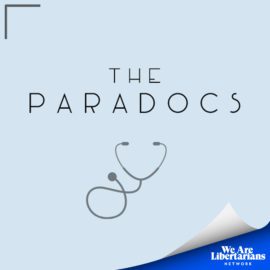Click here to subscribe to the podcast.
There’s no shortage of an alphabet soup of government agencies but the same exists within the nebulous public-private sphere of medical education and credentialing. These non-profit organizations were created to ensure a baseline within medical education institutions across the entire country for medical students, foreign medical graduates and residencies. However old and established these institutions are, they are still staffed by people who make decisions and are charged with maintaining the organizations financial stability.
But, since they don’t have any real competition, they can make financial decisions that are not always the best for the long term viability of the organization which can lead to problems in the future. Sometimes those futures become the present and people paying for their services, ie, medical students, residents, and foreign medical graduates take the brunt of their poor fiduciary planning.
The real financial risk to many of these organizations is similar to what threatens governments at the local, state, and federal level: pensions.
The Sorry State of NBME’s Pension Program
Charles Kroll is a forensic accountant which means he is adept at parsing financial reports and determining where money is flowing and where the inherent financial risks are to organizations. With the help of analyst Elizabeth Tremblay, they have analyzed the financial data from the National Board of Medical Examiners (NBME) – which conducts the testing for medical students – and have found troubling signs. Foremost is that the NBME has a retirement fund that is worth almost $300 million which is twice the value of the organization. On top of this, the retirement fund is still underfunded which means it is at some risk for default with an organization that clearly could not meet those extra payments since it is dwarfed by the size of the retirement fund.
Of course, the great risk is to medical students which would probably be on the hook to make up for the financial offset if the retirement fund becomes grossly underfunded. The only real source of revenue for the NBME is its examination fees. And for medical students, they are forced to pay whatever fee the NBME comes up with since there is no competition and alternative testing organization in the United States. The financial mismanagement of this and other organizations will fall hardest on those with no choice and the least ability to pay.
Defined Benefits are the Problem
Retirement benefits are usually of two main types, defined benefits and define contributions. It effectively shifts the risk either on the employer or the employee. In the private sector, defined benefits (guaranteed payouts over the length of your retirement) haven’t really existed for 35 to 40 years. Nowadays, private companies and most non-profit organizations offer 401Ks which are specified contributions but do not guarantee your future payouts – they are whatever they returns are.
What is so unusual is that all of these medical education boards use defined benefits as their retirement structure which puts their organizations and, by definition, their clients at risk for covering the gap of underfunding their benefits. According to Kroll, unless the organizations kill their defined benefits plans they will be at increasing risk for insolvency or at a minimum, jacking up fees to students.
Podcast: Download


